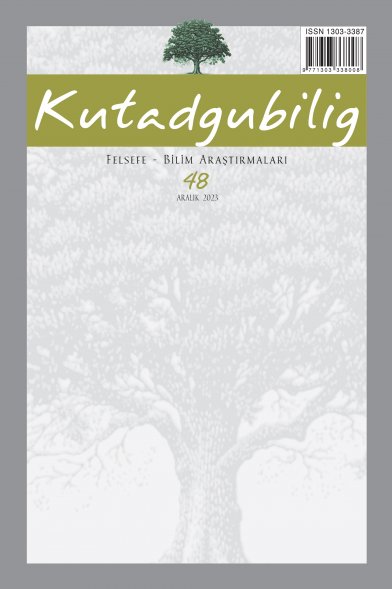SANAT ESERİNİN KÖKENİ
Bu makale Heidegger'in ikinci dönem içerisindeki çalışmaları arasında sayılan "Sanat Eserinin Kökeni" çalışmasını konu edinir. Schufreider'in bu makaledeki asıl iddiası, Heidegger'in düşüncesinin sanata çevirmesinin nedeninin felsefeye kendisinin şiirsel düşünme olarak adlandırdığı yeni model bir düşünme sağlamak olduğudur. Bu iddiaya ulaşabilmek için, metin dört ayrı bölümden oluşacak şekilde düzenlenmiştir; "Sanatı Kökenlendirmek", "Bir Dünyanın Açığa Çıkarılması", "Bir Çatlak Tasarlamak" ve "Hareket Eden Bir Güzellik". Her bölüm kendisine has sorular içerir: Sanat eserinin kökeni nedir? Bir şeyi sanat eserine çeviren iş nedir? Bir sanat eseri nasıl bir dünyayı açığa çıkarabilir? Bir sanat eseri nasıl bizi tarihe katabilir? Schufreider tüm bu soruları Heidegger'in düşüncesini kurmak için kullandığı köklerin yardımıyla cevaplamaya çalışır; stelen, reissen, richten, rücken. Sanat eseri ile ilgili bu soruları dilsel köklerle cevaplamak geleneksel bir biçimde olmayacak şekilde bizi kaçınılmaz olarak sanattan dile yönlendirir
THE ORIGIN OF THE WORK OF ART
This paper is about Heidegger's "The Origin of the Work of Art" which is counted in his later works. In this paper, Schufreider's main claim is that Heidegger turn his thought to art in order to provide a new model philosophy which he is called as poetic thinking. According to reach this claim, paper is organised in four distinct chapter; "Orginating Art", "Unearthing a World", "Designing a Rift" and "A Moving Beauty". Each chapter has its own question: What is the origin of the Art Work? What work turns someting into an art work? How can an art work unearthed a world? How can an art work take us into history? Schufreider try to answer these questions with the help of some selected roots that Heidegger employed to found his thoughts; stellen, reissen, richten, rücken. Answering these questions that is about art work, with these linguistic roots necassarily lead our attention from art to language but not in a conventional form
___
GA 5: Holzwege, ed. Friedrich-Wilhelm von Hermann, 1977.PLT: Poetry, Language, Thought, trans. Albert Hofstadter, New York: Harper & Row, 1971. GA 5, 62.
THE ORIGIN OF THE WORK OF ART
Der Ursprung des Kunstwerkes designates both a topic and a text. And just as there are multiple versions of the text, there are a number of topics at issue, over and above the question of the origin of artwork. In fact, one might argue that Heidegger's aim in turning his attention to the work of art in the 1930s is to provide a new model of philosophy; although seeing this would require an appreciation of the precise way in which the topic of art is treated in a philosophical text that is designed to initiate a poetic thinking.
In what follows, we will be drawing our account primarily from this final version, noting differences from other versions only when unavoidable. In this respect, there are two worth mentioning from the start, namely, in connection with the First Version of the essay; for its stunning formulation that "truth is essentially earthy (erdhaft)" is omitted from later versions, as is its claim that only art "works." Given this distinctive emphasis, we begin with a discussion of work, before turning our attention to the Earth. Originating Art
As necessarily as the artist is the origin of the work in a different way than the work is the origin of the artist, so it isequally certain that, in a still different way, art is the origin of both artist and work. (GA 5, 1/PLT, 17)
When a work is created, brought forthout of this or that work-material--stone, wood, metal, color, language, tone--we say that it is made, set forth out of it. (GA 5, 31/PLT, 45)
Truth establishes itself as a strife within a being that is to be brought forth only in such a way that the conflict opens up in this being, that is, this being is itself brought into the rift-design. (GA 5, 51/ PLT, 63)
History is the transporting of a people into its appointed task as entrance into that people's endowment. (GA 5, 65/ PLT, 77)
Does the clearing happen through language or does this appropriative event of clearing first grant articulation and renunciation and so language? Language andbody (speech and writing). (GA 5, 62)
Given the word-play that we have seen on display, it should come as no surprise that a text on the origin of art would inevitably lead to the thought of linguistic work in its own originality as well as to a (re)consideration of philosophy as "a work of the word" in its kinship" with poetry. This is not a matter of art yielding to philosophy, as in Hegel, and certainly not of poetry giving way to prose. On the contrary, the point, we would insist, is to recreate philosophy in the face of art;even if Heidegger will do so by insisting upon the priority of a poetic thinking.
- ISSN: 1303-3387
- Yayın Aralığı: Yılda 2 Sayı
- Başlangıç: 2002
- Yayıncı: Dergah Yayınları A.Ş.
Sayıdaki Diğer Makaleler
HANS REICHENBACH VE TÜRK FELSEFESİ'NE KATKILARI
METAFİZİĞİN TEMEL KAVRAMLARINDAN HAYVAN SORUSUNA: DÜNYA-SONLULUK-YALNIZLIK
HERDER'İN "DİLİN KÖKENİ HAKKINDA" İNCELEMESİ
GREKLER VE HEIDEGGER: DÜNYANIN AÇILMIŞLIĞINDA VARLIĞIN DİLSEL DENEYİMİ
